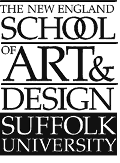
Styles of the Renaissance Period
 |
Styles of the Renaissance Period |
| www.greatbuildings.com | |
| www.bluffton.edu/~sullivanm/ | |
| www.lib.virginia.edu/dic/colls/arch102/index/ | |
| Vocabulary list for these chapters | |
| Vocabulary (Word Document) |
| Time Line of Renaissance Period Styles | ||
|
|
|
|
|
|
Francois I 1515-1547 | Elizabeth I 1558-1603 |
|
|
Henri II 1547-1559 | James
I & Charles I
(Early Jacobean) 1625-1649 |
|
|
Louis XIII 1559-1643 | Cromwell 1649-1660 |
Furniture Characteristics: Italy
Early Renaissance: 1400-1500 (Florence School)Furniture Characteristics: FranceExperimental/transitional.
Re-introduction of classical orders and the vocabulary of classical ornament and motifs.
Painting is favorite form of surface decoration also gilding, intarsia, certosina, pastiglia.
Few and modest moldings.
Sparing but effective carving in low relief.
Mostly large, flat surfaces ready for painting or inlay.High Renaissance: 1500-1550 (Roman School)
Perfection of proportions, balance and human scale
Time of great painters: Titan, Michelangelo, Raphael
Rich carving but delicate in composition
Moldings more prominent & vigorously carved
Raphalesque grotesques and arabesques
Intarsia inlayLate Renaissance: 1550-1600/50 (Venetian School)
Elaborate/Mannerist forms
Heavy, ornate, large scale
Excessive & boldly carved moldings
Heavy heraldic devices
Some turning
Pietra Dura (wood ground)
Pietra Commissa (marble ground)
Francois I style 1515-1547Furniture Characteristics: EnglandTransitional, grafted Renaissance motifs onto Gothic forms
Invasions into Italy revealed classical treasures especially in architecture
The classical orders introduced into France and appear as new motifs on furniture
Invited Italian craftsmen to France, imported Italian furniture as well as from Flanders, Spain, Germany
Abundant ornament, fanciful motifs
Walnut supercedes oak as popular wood
Carving used in various reliefs
Marble insets are used
Wrought iron mounts usedHenri II style: 1547-1589 (includes the reign of Henri III 1559-1589 (assassinated))
Better understanding of the Italian Renaissance form, proportions and balance (due to marriage of Henri II to Catherine de Medici)
Refinement and restraint of form and decoration
Ornament & moldings in scaleHenri II reign:
Furniture very similar to Italian (Herni married to Catherine de Medici)
Borrowed classical architectural motifs, (columns, pilasters, pediments)
Simple forms with high level of balance and proportion
Two concurrent stylistic trends:
Ile de France style, (classical influence) Refined, delicate carving in low relief
Style influenced by duCerceau and Goujon
Burgundian style, (Mannerist influence) Elaborate carving in high relief, massive
Mythological figure subjects, term figures,(see work of Hugh Sambin)Henri III reign (still considered part of the Herni II style):
Civil and religious wars not conducive to nurturing native craftsmanship, (luxury furniture imported from Italy, Spain, Flanders, Germany).
Due to religious wars, Huguenots fled country and all branches of art suffered. Motifs became courser, columns become too long
and slender, heavier Flemish influences are evident
Louis XIII Style 1589-1643(includes reign of Henri IV 1589-1600)
Peace and commercial trade restored with Netherlands, Italy, Spain
Bourbon monarchs considered importance of art and architecture to contribute to the dignity and prestige of the state. Provided free workshops at the Louvre and encouraged new decorative art industry. Planned to organize all branches of the arts under the control of the central government.
No strong "French" style during this time but strong Italian, Flemish, Spanish influences
Heavy, massive, rectilinear, simple, austere
Characteristics: turning, split turns, cartouches, strapwork, fat cherubs, oval bosses, swags, masks, grotesques,
Geometric ornaments (from Spain) as well as diamond and star point motifs
.
Elizabeth I Style: 1558-1603 (Daughter of Henry VIII (Tudor))Summary Questions: ArchitectureTransitional phase when Italian Renaissance motifs grafted onto Gothic forms and mingled with Gothic ornament
Romayne medallion combined with linen-fold
Principles of balance and proportion not well understood
Carving was favorite form of surface decoration (excessive compared to Early Jacobean)
Heavily carved bulbous cup and cover support with gadrooning
Strapwork typical
Inlay of multi-colored woodsJames I & Charles I a.k.a. Early Jacobean Style: 1603-1649 (First of Stuart monarchs)
Better understanding of Renaissance principles of balance and proportion
Less carving and less use of figural subjects
Cup and cover support becomes more baluster shape
Inlay of multi-colored woods
Applied oval bosses and split turns
Raised panels on case goodsCromwellian Style: 1649-1660
Puritan attitude toward decoration (translation: there wasn't any)
Simple forms
Multi-purpose furniture is popular
Turning often the only form of surface decoration
Seat furniture lacks comfort
(Bramante) Tempietto (significance of site, elements used that reflected treaties of Alberiti on church architecture.
(Alberti) S. Andrea (important elements of the facade and how facade articulates the interior).
(Michelangelo) Mannerist elements of the Laurenziiana Library.
(Palladio) Villa Rotonda, (interior and exterior). In general, how did his buildings related to the site?
What significant characteristics were common to Palladio's projects?
What new elements did Lescot add to the new wing of the Louvre? What traditional elements did he retain?)
Compare the interior and exterior of Banqueting House and Queen's House by Inigo Jones to works by Palladio.
Italian Furniture Terms
pastiglia
certosina
arabesques & grotesques
lozenge
cartouches
intarsia
pietra dura
pietra
commessa
sgabello
dantesca
savonarola
panchetto
cassapanca
predella
refectory table
cassone
Spanish Furniture Terms
mudejar
chatones
iron underbracing
taracea
sillon de caderas
sillon frailero
portuguse chair
mesa
lyre shape
vargueno
puente
taquillon
papeler
French Furniture Terms
caquetoire
chaise a vertugadin
Englsih Furniture Terms
cup & cover support
gadrooning
romayne medallions
strapwork
heraldic devices
baluster turn
bobbin turn
oval bosses
applied split turns
wainscot chair
Glastonbury chair
monk's chair
court cupboard
hall & parlor cupboard
farthingale chair
gate-leg tables
Cromwellian Chair
| Syllabus | Egypt, Greece, Rome, Romanesque, Gothic, Byzantine | Baroque | Rococo | American Colonial | Contact Marg |